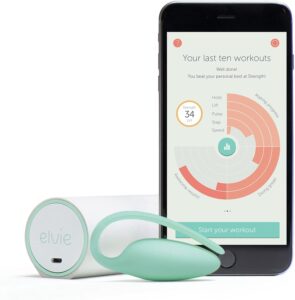Pelvic floor dysfunction is the inability to correctly tighten and relax the pelvic floor muscles. These muscles help to support the organs in your pelvis, including the bladder, rectum, and uterus or prostate. Contracting and relaxing these muscles allows you to control your bowel movements, urination.
Symptoms:
-
Bladder issues, such as the sudden urge to urinate, painful urination or leaking. There might also be difficulty starting to urinate or emptying the bladder properly and leaking when coughing, laughing or exercising.
-
Constipation or bowel strains that are different to normal or leaking stool or difficulty controlling gas.
-
Lower back pain.
-
Pain or a pressure in the pelvic region, genitals, or rectum area.
-
Pain or discomfort during sex.
-
Muscle spasms in the pelvis.
-
Feel heaviness, fullness, pulling, or aching in the vagina that gets worse by the end of the day or is related to a bowel movement
-
See or feel a “bulge” or “something coming out” of the vagina.
Causes:
-
THIS study reported that spontaneous vaginal deliveries were significantly more likely to be associated with stress incontinence and prolapse and the most dramatic risk was associated with operative vaginal births.
-
Injuries to nerves during births.
-
Injuries to muscles and other soft tissues during birth.
-
The formation of scar tissue following tears / surgical interventions during or following births.
Here is what the evidence says about the treatment options:
Pilates – evidence does support the use of Pilates-based exercise during & after pregnancy for the treatment of many conditions including pelvic floor strength. Evidence has also shown that Pilates can also have a positive effect on the birth and the outcome following the birth. This study compared Pilates with standard pelvic floor exercises and concluded that the Pilates exercise program was as effective as conventional pelvic floor exercises in speeding up continence recovery and it also achieved a higher rate of fully continent patients in the short-term.
Have a look at our Top 5 online Pilates options here.
Yoga – evidence suggests that prenatal yoga may help pelvic dysfunction and help to improve mental health conditions like stress, depression, anxiety that can be associated with pain in pregnancy. Yoga has also been shown to help with pain and pleasure at the delivery of the baby and with perinatal outcomes such as lower delivery times and obstetrical complications.
There are lots of Online Yoga programmes available, have a look at our Top 5 here (and why we love them)! You can also read our blog on how yoga can help in other ways.

Pelvic Floor strengthening exercises – Many studies have shown the effectiveness in pelvic floor exercises when it comes to improving pelvic floor strength and incontinence symptoms. THIS study found that pelvic floor training exercises could cure or improve symptoms of stress incontinence in particular but also were effective on all other types of urinary incontinence.
Have a read of the blog on pelvic floor exercises vs Pilates HERE.
Biofeedback – There is quite a lot of research into the effectiveness of biofeedback when it comes to conditions associated with a weak pelvic floor. THIS study concluded that, when comparing biofeedback to pelvic floor muscle training alone, the results were far superior using the feedback device. Biofeedback therapy builds on strength training by incorporating the use of equipment to record or amplify activities of the body and feed the information back to the patients. It can make doing pelvic floor exercises a little more fun / interesting and gives you a target and feedback on how much improvement there has been. You could speak to your women’s health specialist Physiotherapist about using biofeedback devices or buy them online, THIS one has great reviews and is available on amazon.
Vaginal Cones – These are weighted toners which come in different sizes to help strengthen the pelvic floor muscles. They are designed to improve strength over a 12 week period, they’re easy to use and the ideal introduction to pelvic floor exercises. This study showed a better result when using biofeedback and toning cones, over just pelvic floor exercises on their own.
You can buy weighted cones / toners online HERE, they have excellent reviews. Always speak to your healthcare provider before using anything like this to check that it is the right course of treatment for you.
Really helpful links we think you’ll love:
-
A really good podcast that we highly recommend for more information on all things pelvic floor: How Do I Strengthen my Pelvic Floor Muscles – FitNest Mama
-
Here is a link to a really informative video that explains pelvic floor dysfunction really well.
-
There is also a brilliant app called Squeezy. This app shows you exactly how to do your pelvic floor exercises and for how long, tailored to each individual.
Symptoms to watch out for:
If you have any of the following symptoms then go to your nearest accident and emergency department immediately:
-
Severe low back pain.
-
Pain, numbness, or weakness in one or both legs that causes you to stumble or have trouble getting up from a chair.
-
Loss of or altered sensations in your legs, buttocks, inner thighs, feet or areas that you sit on when in a chair (including genitals / anus) that is severe or gets worse and worse.
-
Recent problem with bladder or bowel function, such as trouble eliminating urine or waste (retention) or trouble holding it (incontinence).
-
Sexual dysfunction that has come on suddenly.



